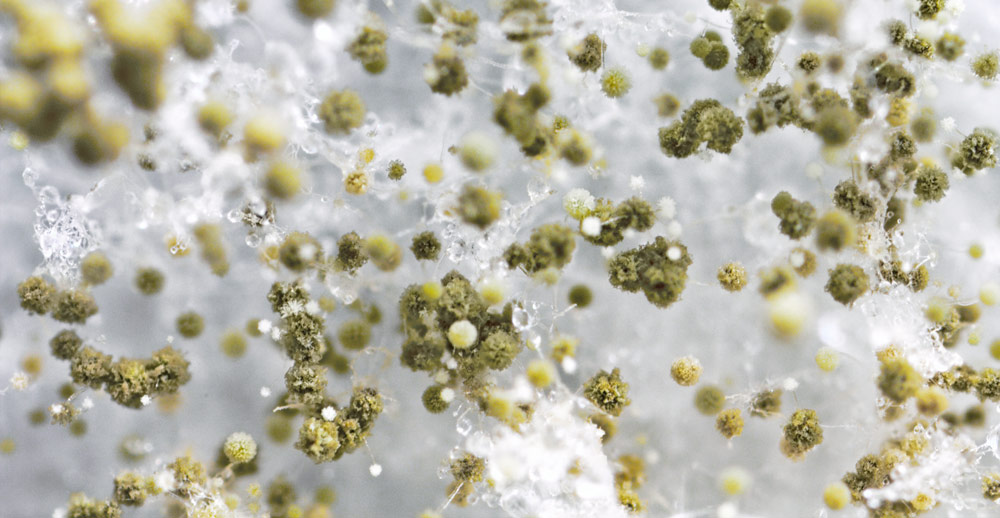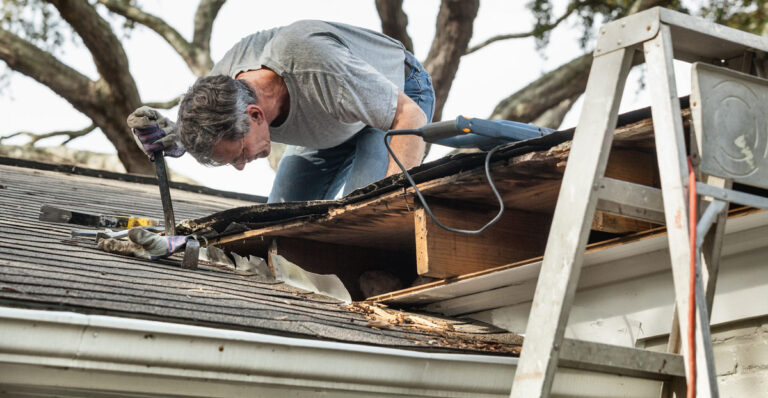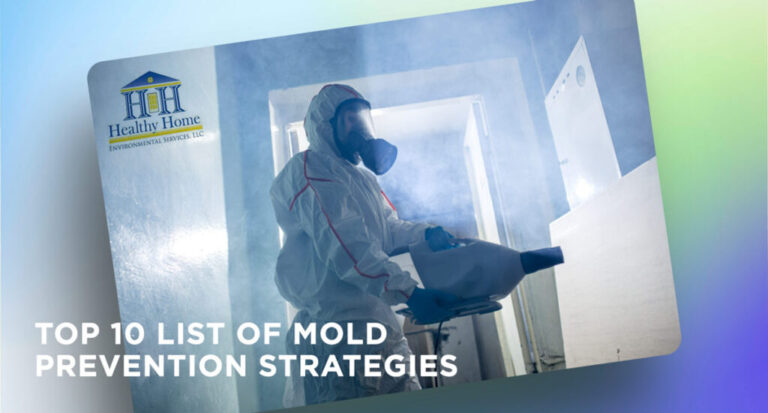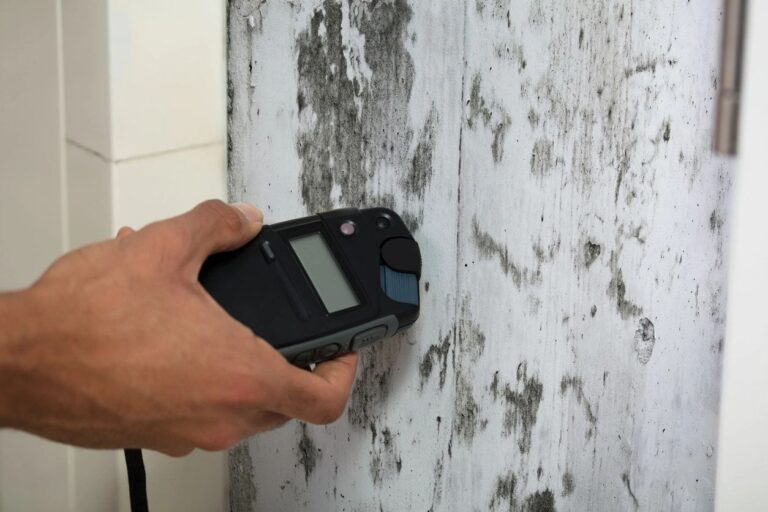Home air testing is essential for a healthy home. Make sure to test indoor air quality during the pollen season.
The pollen season is when many people experience symptoms such as sneezing, itchy eyes, and a runny nose. While many over-the-counter medications can help alleviate these symptoms, some people may want to test the indoor air quality of their homes to see if there is anything they can do to improve it.
This time of year can be miserable for people who suffer from allergies. Outdoor air pollution is well known, but what about the quality of the air inside your home? Many people spend most of their time indoors, so it’s important for indoor air quality testing of your home during the pollen season.
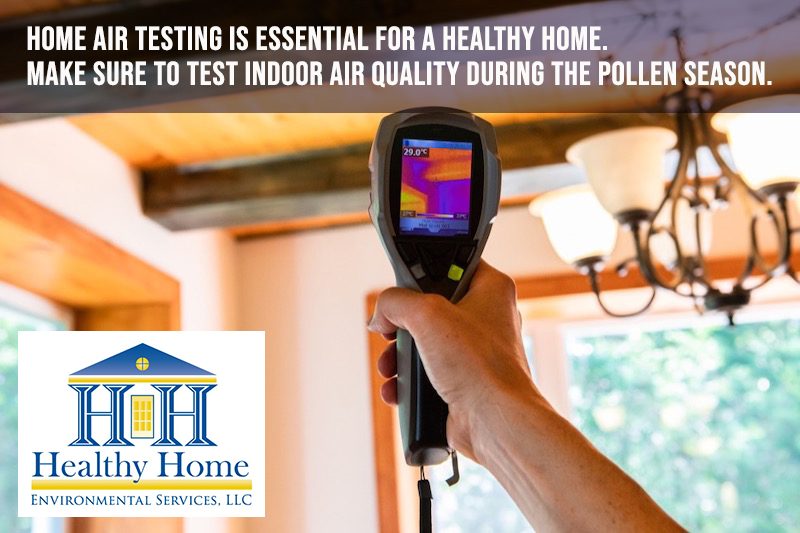
What is pollen, and how does it affect people and air?
Pollen is a fine powder released by flowers that helps fertilize other plants. It can cause allergic reactions in some people, leading to symptoms such as sneezing, congestion, and itchy eyes. Pollen levels vary depending on the time of year, with higher levels typically seen in the spring.
People who are sensitive to pollen can experience a range of symptoms, depending on how allergic they are. For mild cases, symptoms are a runny nose or itchy eyes. In more severe cases, people may experience difficulty breathing and even breathing attacks. Pollen can also aggravate eczema and other skin conditions. It is essential to detect, remove, and prevent pollen in your home.
Types of Pollen: How does each type affect people?
There are many different types of pollen, but three of the most common are ragweed, grass, and tree pollen. Each type of pollen has a different effect on people.
- Ragweed pollen is the most common allergen in the United States. It can cause sneezing, itchy eyes, and a runny nose.
- Grass pollen is also a common allergen. It can cause sneezing, itchy eyes, and a runny nose, as well as asthma symptoms.
- Tree pollen is less common than ragweed or grass pollen, but it can also cause sneezing, itchy eyes, and a runny nose.

Seasonal Allergies: What are they, and what are the symptoms?
Seasonal allergies, also known as hay fever, are a type of allergy caused by outdoor environmental factors such as pollen. Some symptoms include sneezing, running nose, itchy eyes, and a scratchy throat. Seasonal allergies can be treated with over-the-counter medications such as antihistamines or nasal sprays or by seeing a doctor for prescription medications.
Treatments: How can people treat their allergies?
There are many ways people can treat their allergies. Some people may need to take medication daily to control their allergies, while others may only need to take medication when they have an allergy attack. People can also take many over-the-counter medications to help them breathe better and control their allergy symptoms.
Many people find relief from allergy shots. These shots help the body build up immunity to the allergens that cause problems. Allergy drops, placed under the tongue, are another option for treatment. People can also try natural remedies such as saline nasal sprays, honey, and ginger.
Prevention: How can people prevent allergies?
There are a few different ways that people can go about preventing allergies. Some people experience relief by avoiding potential allergens, while others may need to take medication or get allergy shots to lessen their symptoms. Some natural remedies can help, such as using probiotics or an air purifier.
What are volatile organic compounds, and how do they impact air quality?
Volatile organic compounds (VOCs) are organic chemicals that vaporize (evaporate) easily from liquids and solids. They can be found in paints, lacquers, glues, cleaning supplies, pesticides, and other products. Many VOCs cause health problems such as eye and throat irritation, headaches, nausea, and liver, kidneys, and central nervous system damage. Some VOCs can also cause cancer.
Volatile organic compounds can enter the air when products containing them are used or when they escape from containers. The amount of VOCs in the air depends on the product’s volatility (the ease with which it vaporizes), weather conditions, and how much is released. Some VOCs stay in the air for a short time; others can persist for days or weeks in your home.
Environmental testing of indoor air quality during the pollen season
Springtime in many parts of the country means one thing: pollen. This time of year can be a nightmare for people who suffer from allergies. Not only is the pollen bad for your respiratory system, but it can also affect the indoor air quality in your home. If you’re not sure whether or not your home’s air quality is affected by pollen, smoke, formaldehyde, mold VOC’s and dust, call us today for testing. Fortunately, there are a few things you can do to improve your indoor air quality: such as using portable air purifiers, HEPA grade HVAC filters, and thorough cleaning using plant-based products.
One way to test your home’s air quality is to use a professional air quality testing service. These services can test for various factors that may affect your health, including mold, smoke, lead, allergens, and chemical vapors. They can also help you devise a plan to improve the indoor air quality in your home.
Steps to take for indoor air quality tests
The first step in testing your indoor air quality is determining the pollutants that may be present. This can be done through various methods such as speaking with an IAQ specialist, reviewing past test results, performing additional testing, or conducting a general home survey.
Once the pollutants have been identified, it’s important to select the right type of IAQ test. Depending on the contaminant, different tests may be necessary. For example, a passive sampler may be used for VOCs (volatile organic compounds), while an air sampling cassette would be more appropriate for mold spores.
After selecting the correct type of test, it’s important to properly prepare and conduct the test according to the manufacturer’s instructions. This includes following all safety precautions and calibrating any equipment before use.
Professional testing of your air quality
Did you know that the air inside your home could be up to five times more polluted than the air outside? Indoor air pollution can cause a variety of health problems, such as allergies and respiratory infections. That’s why it’s important to have indoor air quality regularly tested in your home.
A professional air quality testing service can identify the sources of indoor pollution and recommend solutions to improve the air quality in your home. Air quality testing can also help identify potential health risks associated with pollutants in your area. If you’re concerned about the air quality in your home, contact a professional testing service for advice and solutions.
What to do when you test air quality, and it is poor
Air quality is an important issue that should be considered year-round
Air quality is an important issue that should be considered year-round. The quality of the air we breathe inside our homes can affect our health and well-being. Poor indoor air quality can cause several problems, such as mold, allergies, and other respiratory problems. It is important to improve the air quality in your home or office.
A way to improve the air quality is to increase the fresh air that comes into the room. You can do this by regularly opening windows and doors or using an exhaust fan. You can also improve air quality by cleaning your floors and furniture regularly. Dust mites are a common source of indoor allergens, so it is important to clean surfaces frequently and keep dust levels low.
During Poor Air Quality Days: Stay indoors as much as possible
According to the U.S. Environmental Protection Agency (EPA), air pollution is a major environmental threat to public health. To protect yourself from the harmful effects of home indoor air pollution, it is vital to stay inside your home as much as possible on days when air quality problems.
Indoor air can be up to five times more polluted than outdoor air, so it is important to improve indoor air quality.
Close windows and doors when possible
Poor air quality is a problem that many people face, especially those who live in cities. One of the best ways to combat this issue is by closing windows and doors to keep the bad air outside. This will help improve air quality inside the home and make breathing easier for people. Additionally, avoiding harsh chemicals and products that produce pollutants is important. By taking these simple steps, we can all work together to improve the overall air quality in our communities.
Avoid outdoor activities, especially those that produce exhaust fumes
Many health risks are associated with spending time outdoors; the most serious is poor air quality. In particular, exhaust fumes can cause many problems, from asthma attacks to long-term respiratory illnesses.
If you have to go outside, try to avoid busy streets and other areas with a lot of traffic. If you can’t avoid those places, try to stay upwind of the exhaust fumes. You may also consider wearing a mask to protect your lungs from pollution.
If you have to go outside, try to do so in the morning before 10 am or after 6 pm
The quality of air outside can depend on the time of day. Air quality is usually better in the morning before 10 am or evening after 6 pm. During the day, there may be more pollution in the air from cars and factories. If you are outside during the day, try to stay upwind of the exhaust fumes. If you have to go out at night, try to do so between 6 pm and 10 am.
Keep indoors well ventilated
To keep your home well-ventilated, you should open windows and doors whenever possible, especially when cooking or bathing. You should also use exhaust fans in the kitchen and bathroom to remove moisture from the air. If you have a central air conditioning system, make sure it is set to recirculate air rather than drawing in outdoor air. It should be set on cool mode and not fan mode. Indoor humidity levels should be well below the industry standard of sixty percent.
Consider using an air purifier and/or air quality monitor
The quality of the air you breathe is important for your health. You can improve your air quality inside by using an air purifier. Most air purifiers remove harmful pollutants from the air. They come in a variety of sizes and styles to fit your needs.
Some air purifiers are designed to be used in a specific room, such as a bedroom or living room. Others are intended to be used in large spaces, such as a whole house. Some air purifiers use filters to remove particles from the air. Other air purifiers use ultraviolet light filters and kill harmful bacteria and viruses.
Air purifiers can help improve the health quality of the air you breathe inside your home and may help reduce your symptoms if you have allergies due to an air quality test.
Contact a professional indoor air quality testing company
The air quality in your home is important. You and your family breathe the air in your home every day. You want to make sure that the air is clean and healthy. There are ways to improve indoor air quality in your home. One way is to contact a professional air quality testing company. They can test for volatile organic compounds in your home’s air and tell you what you can do to improve the air quality. They can also give you tips on keeping the indoor air quality in your home at its best.
In conclusion, it is important to test your indoor air quality problems during the pollen season.
In conclusion, indoor air quality testing of your home or dwelling is a must for anyone who suffers from allergies or asthma. Pollution levels inside your home can be just as bad, if not worse, than outdoors. When you test the air quality in your home or office, you can take steps to improve the air you breathe and reduce your exposure to harmful pollutants. Pollen can cause many health problems, so it is crucial to reduce your exposure.
You can test your air quality by hiring a home air expert such as Healthy Home Environmental Services LLC. By taking these steps, you can ensure that you and your family have a healthy home during the pollen season.
We hope you have enjoyed and learned essential information from this post. If you wish to learn more, get in touch with us.
If you or someone you know requires home air testing services, call us today for more information! Since 2006, the mold experts at Healthy Home Environmental Services have provided air quality testing for mold, lead, VOC’s, formaldehyde, allergens, and more throughout Orange County, FL. Our mission is to improve the air health of our community’s homes, schools, and workplaces.
Additional services include mold inspection, mold testing, mold assessment, and a top air quality detector (utilizing an air quality monitor) to test air quality in the home. For insurance department, terms, questions, or other home mold information, contact Sally or Dana Aikin at (407) 273-9387.
Healthy Home Environmental Services
14432 Conifer Drive, Orlando, FL 32832
(407) 273-9387 | Visit our website: https://1healthyhome.com/
Email: [email protected]



